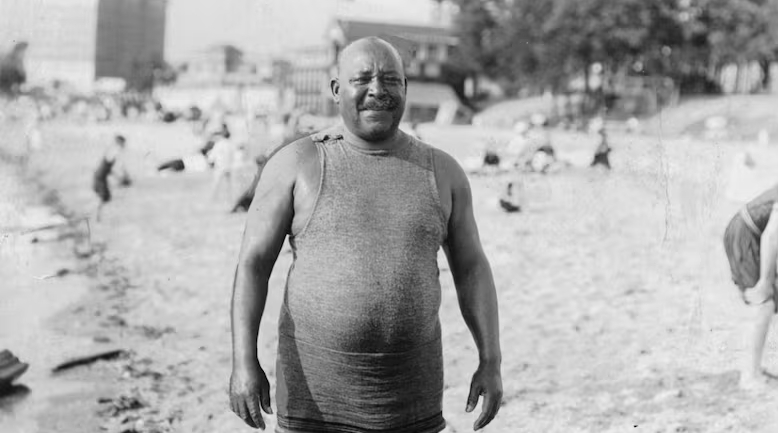New Book Explores the Racism Faced by Legendary Vancouver Lifeguard Serafim 'Joe' Fortes
Subhadarshi Tripathy
2/4/20252 min read


Serafim 'Joe' Fortes arrived in Vancouver in 1885 by chance. A sailor from Trinidad, his ship was badly damaged, and the crew was discharged, leaving him stranded. He stayed, taking on various jobs—including as a bartender and boot black—before becoming one of Vancouver’s most beloved figures: a lifeguard who saved lives and taught generations of children to swim.
According to the BC Black History Awareness Society, Fortes was credited with rescuing at least 29 people from drowning and training countless Vancouverites in water safety. His contributions were widely recognized, and his funeral in 1922 saw an estimated 10,000 mourners lining the streets.
But while his heroism was widely celebrated, his experience as a Black man in early 20th-century Vancouver was shaped by systemic racism, says author Ruby Smith Diaz.
A Complex Legacy
Diaz’s new book, Searching for Serafim: The Life and Legacy of Serafim 'Joe' Fortes, takes a fresh look at Fortes’ life through archival research, newspaper clippings, photographs, and personal reflections, painting a more complex portrait of his reality.
“The common story that we hear about him is that he was just a hero and that he loved being a lifeguard,” Diaz told CBC’s Margaret Gallagher. “And that’s really all we hear about him. I always want to know a little bit more.”
One of the key questions Diaz explores is whether Fortes would have been granted the same recognition if the lives he saved had belonged to marginalized communities rather than wealthy white Vancouverites.
“I questioned whether he would have achieved the same level of fandom and prominence if the lives he was saving were Black, Indigenous, or other racialized people,” she said.
Vancouver’s Contradictions
Despite his popularity, Fortes initially worked without pay, offering his lifesaving skills voluntarily. Eventually, a group of citizens petitioned the city to make him a paid employee, and around 1900, he was hired as a municipal worker—a rare position for a Black man at the time.
Diaz sees the petition as both a moment of progress and a reflection of Vancouver’s racial contradictions.
“At the same time that people were signing this petition to pay Serafim, record numbers were also joining groups that targeted minorities, like the Asiatic Exclusion League,” she said. “Politicians were running for office on platforms advocating for a ‘white Canada.’”
“How do we reconcile the fact that a Black man was beloved and celebrated, while at the same time, policies and rhetoric were threatening his very existence?”
Honoring Fortes Today
Despite the racial barriers he faced, Fortes’ legacy endures. In 1986, he was named Vancouver Citizen of the Century by the Vancouver Historical Society. Several landmarks—including a library, water fountain, and a high-end restaurant—now bear his name.
Diaz’s book launch events will take place in February in Richmond, New Westminster, and Victoria, with Searching for Serafim now available through Arsenal Pulp Press.
Through her work, Diaz hopes to ensure Fortes’ story is remembered not just as a tale of heroism, but as a reflection of Vancouver’s racial history—one that still resonates today.
News
Stay updated with the latest BC news stories, subscribe to our newsletter today.
SUBSCRIBE
© 2025 Innovatory Labs Inc.. All rights reserved.
LINKS
